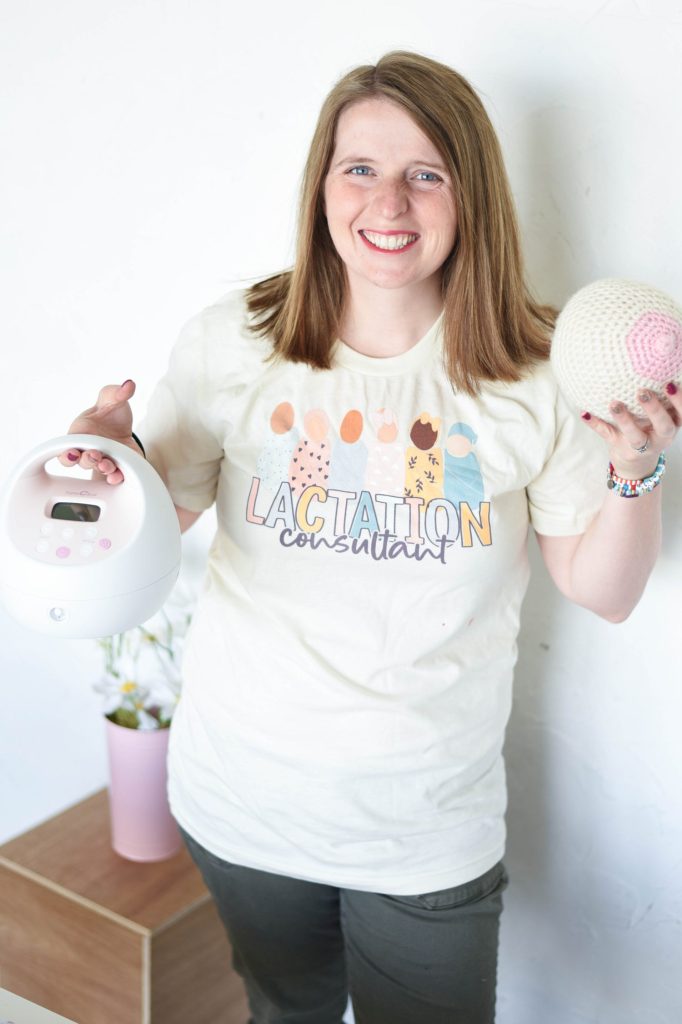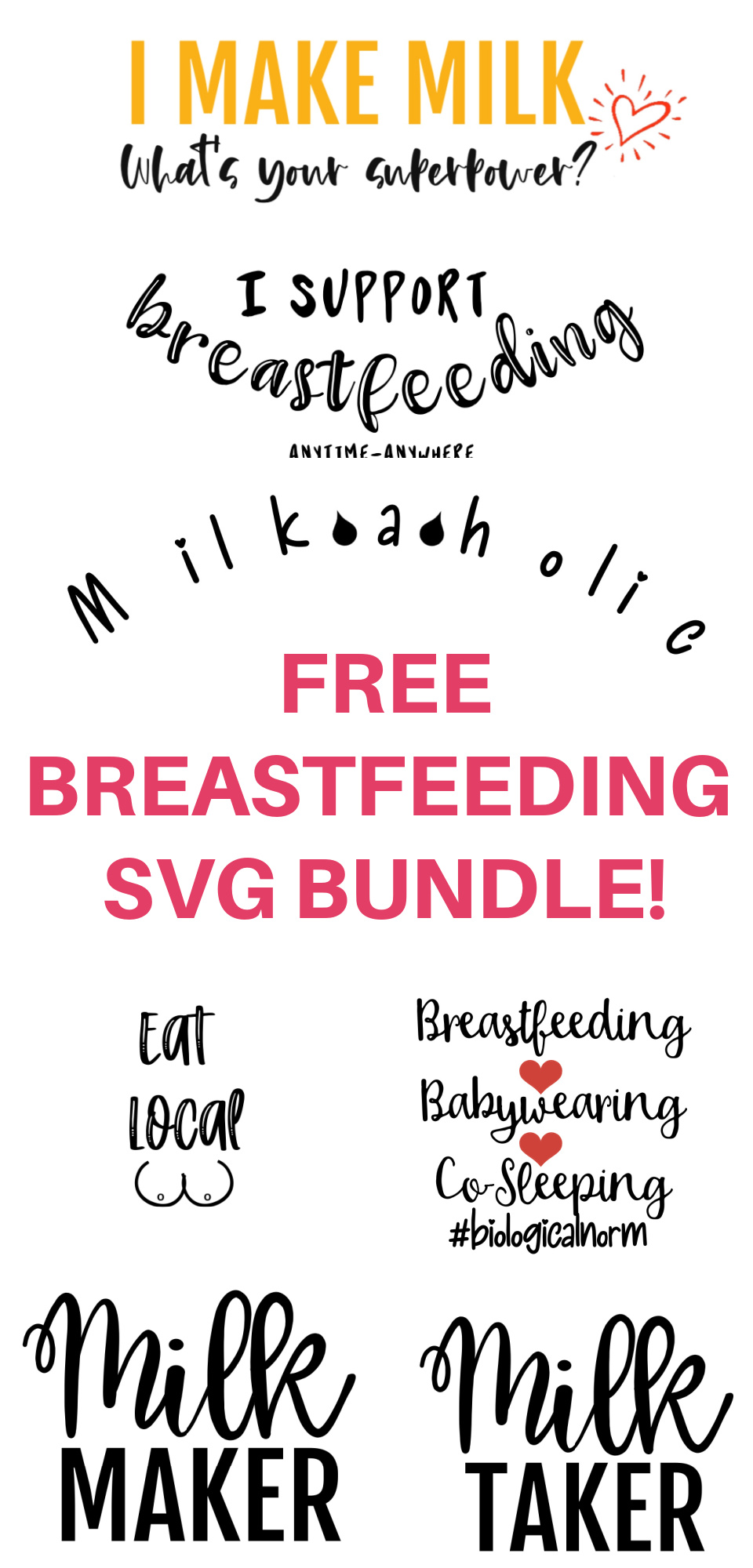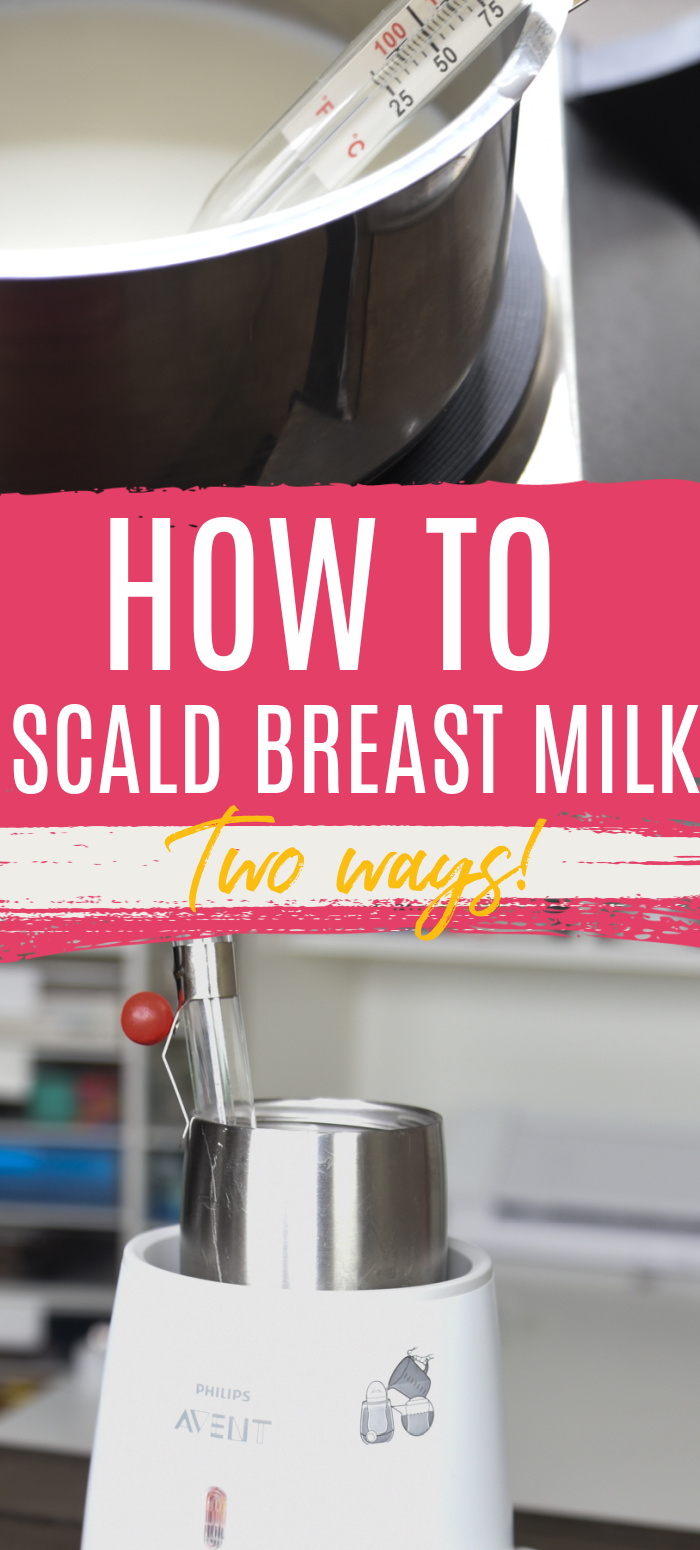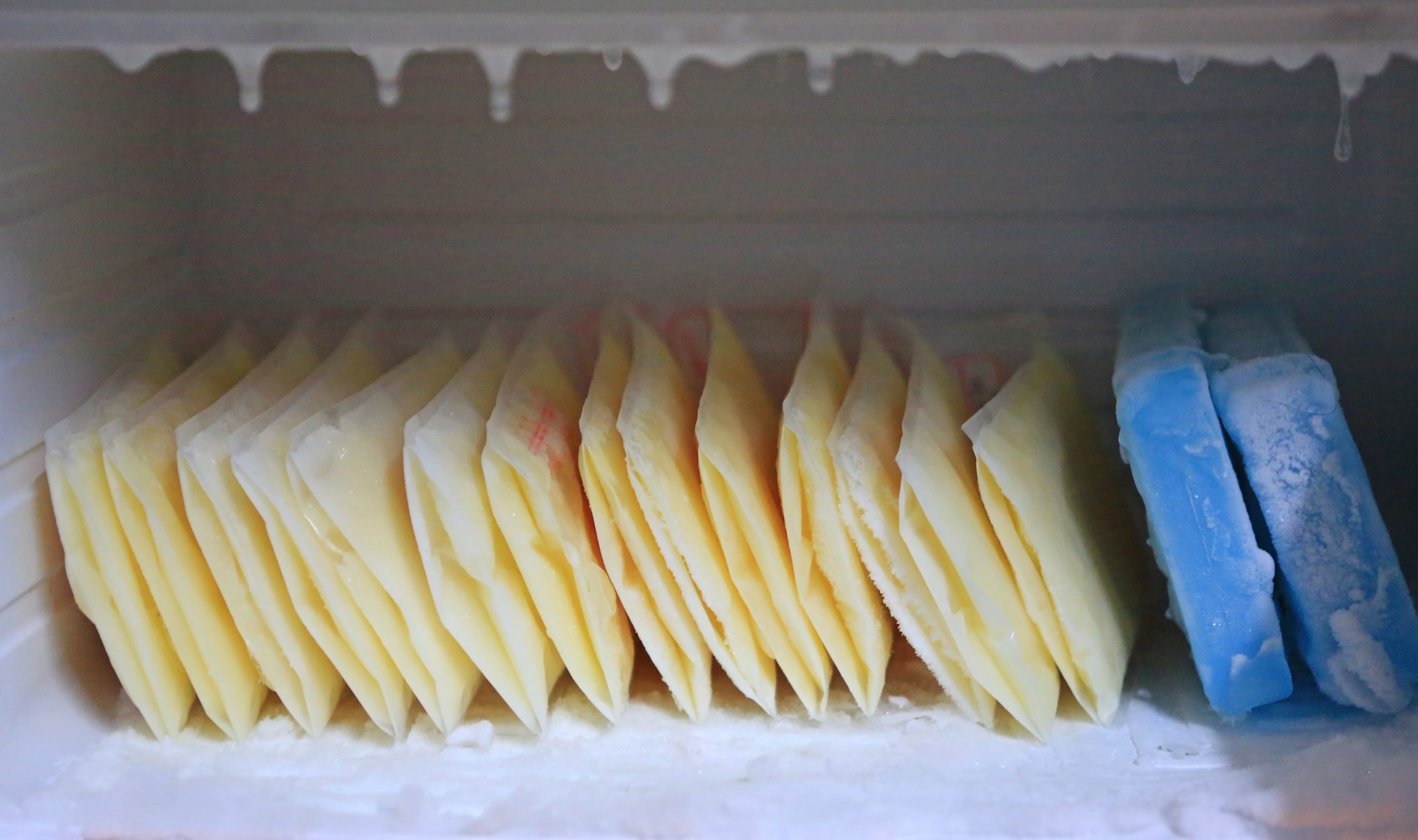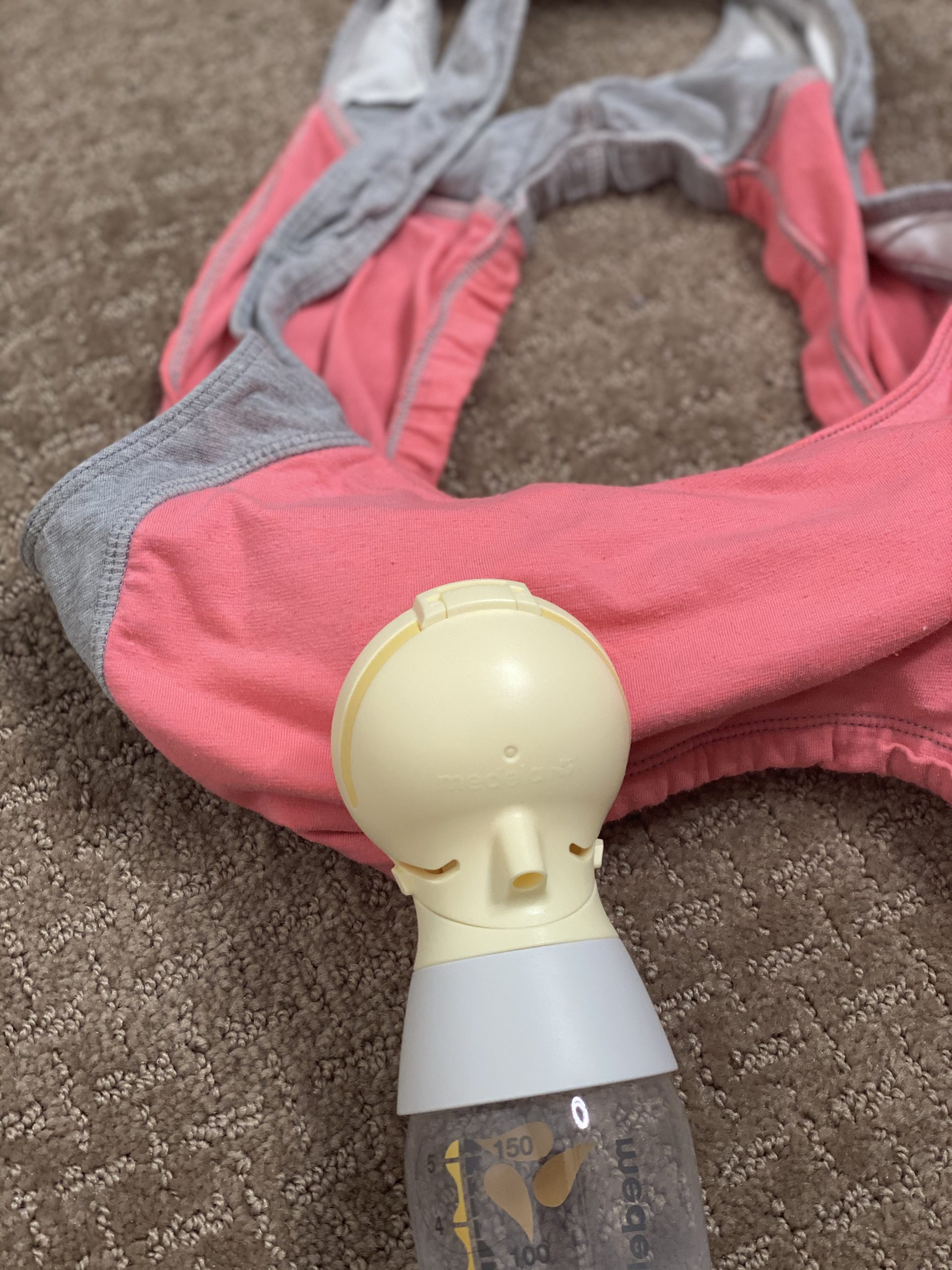The first few days after giving birth can be such a blur.
You’re tired, you’re bleeding, you’re sore. And on top of that, you’re trying to figure out how breastfeeding even works.
At this point, you’ve probably discovered that breastfeeding doesn’t feel as natural as you might have expected. But you also recognize the value of early breastfeeding initiation and frequent milk removal.
You have time to figure things out, but I thought I’d share a few things I’d focus on in the first days after giving birth that might make things a little bit easier. As an IBCLC, I work with many new moms in the first days after they give birth, and I find these things can make a big difference.
- Relax
- Try some hand expression
- Skin to Skin
- Feed on demand
- Lean back
- Ditch the pillows
- Get Help
- Enjoy your baby
Relax
Giving birth can feel like a marathon (quite literally). You might feel super exhausted or still have adrenaline pumping through your veins. Being told you should relax might be the last thing you want to hear – or feel like you can do.
But I promise, it helps. Babies and their mamas are intrinsically connected. If one is stressed, the other tends to be as well.
So, take a deep breath or two. Put on some relaxing music. Put that baby skin to skin, and trust yourself and your instincts. Let your shoulder relax. Even if things aren’t off to the best start, relaxing in any way you can will help you in the long run.
If you’re feeling particularly anxious, be sure to check out a few of my favorite tips for anxiety regulation while breastfeeding.
Hand Expression
Hand expression is one of your superpowers, and I wish it was taught more prenatally. Even if your baby is latching beautifully, hand expression may increase your milk supply by 130% at six weeks – and it’s SO much less stressful than navigating the pump.
I like to encourage moms to hand express after nursing a little bit of milk into a spoon or syringe to offer after nursing. This can help with blood sugar regulation, weight loss, and newborn sleepiness.
Skin to Skin

Do as much as skin to skin as you can. Not only does this help relax both you AND baby, but it’s also the perfect way to encourage self-attachment at the breast. When I have newborns, we are doing skin-to-skin all the time, unless I’m sleeping. The picture above is how i lived with my third child for weeks. He fit perfectly inside my nursing nightgown!
This can help to bring your supply in more quickly and help the baby associate the breast with being a happy place, even if you aren’t nursing.
I LOVE these side snap onesies. They make it easy to skin-to-skin without completely stripping the baby down.
Forget the Clock
I know this is a hard one, mainly because hospitals love having you track feedings to the exact minute. But for healthy babies, I would throw any clock-watching out the window and just pay attention to your baby’s feeding cues.
Milk removal is SO important in the first few days and weeks after giving birth. The more milk that’s removed, the more milk your body makes. The first few weeks really sets the stage for your future milk supply.
It’s okay to feed frequently, and it’s very typical for a newborn to fall asleep a few minutes in, only to wake up 10 minutes later and want to nurse.
Pay attention for any signs of dehydration, but if your baby is nursing well, feeding on demand is the way to go. Here are a few signs that they are feeding well:
- Good diaper output (1 wet and poopy diaper per day of life until day 5, and at that point, we want 5-6 wet diapers and 2-3 poopy diapers)
- You can hear swallows when they are nursing
- Baby has periods of alertness where they are happy
- Baby is content after nursing, even if it’s for a short period of time
- Cries with tears
Lean Back
Far too many moms start breastfeeding by leaning over their baby, stuffing their breasts into the baby’s mouth, and trying to achieve perfect positioning.
However, mom and baby do much better in a laid-back position. It allows gravity to take over, helps the baby to latch more effectively, and it’s more comfortable. It also can help with integrating your baby’s natural feeding reflexes that they are born with. There’s a reason this is called biological nursing!
Ditch the Pillows
Don’t get me wrong – I love a good pillow! But nursing pillows are not ideal for helping baby to nurse. I find they encourage you to lean over the baby, and it often puts the baby in a position that is rigid and uncomfortable.
When latching, I suggest:
- Leaning back and use a cross cradle position
- Putting baby belly to belly, angled with their hips on the opposite hip from the breast your nursing on
- Once baby is comfortably latched, you can add some pillows to help support your elbow. Ideally, you won’t have to use a pillow for baby, especially with laid back nursing.
Get Help
Even if you don’t think you need it, meeting with. anIBCLC to assess breastfeeding can be so helpful early on to prevent any issues you might run into, answer questions, and just get you on the right page.
And if you are struggling, there’s no minimum amount of time you have to wait before you ask for help. I promise that asking for help can save your journey.
I’m available for virtual consults if you need one. The only thing we can’t do is weigh the baby!
Enjoy your baby
Having a baby and breastfeeding can feel overwhelming and stressful. I’ve been there! It’s easy to feel like you can’t even enjoy your baby when things aren’t going well.
But I encourage you to take some deep breaths, do some skin-to-skin, and just enjoy this time with your sweet little newborn. It takes time to get into a groove and get to know each other, and it’s okay to take a break just to breathe in that fantastic newborn baby!

